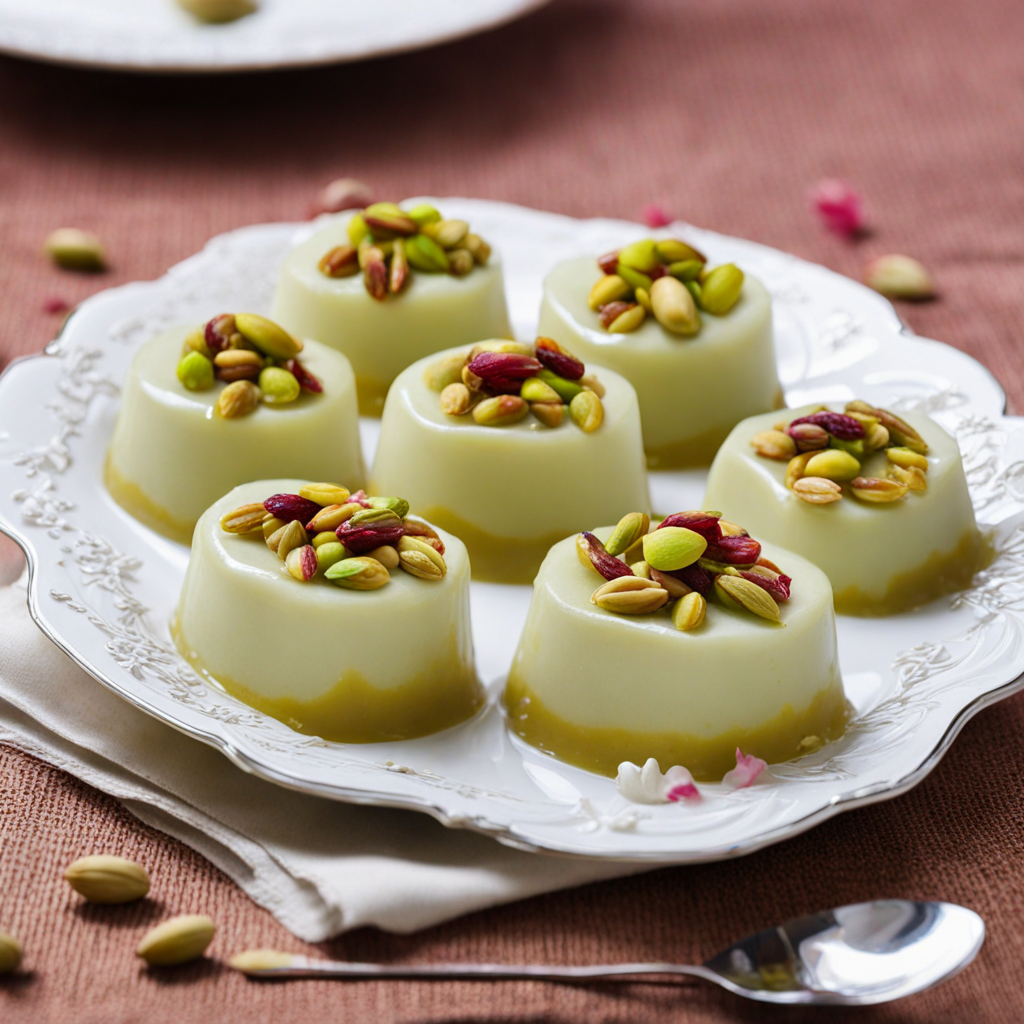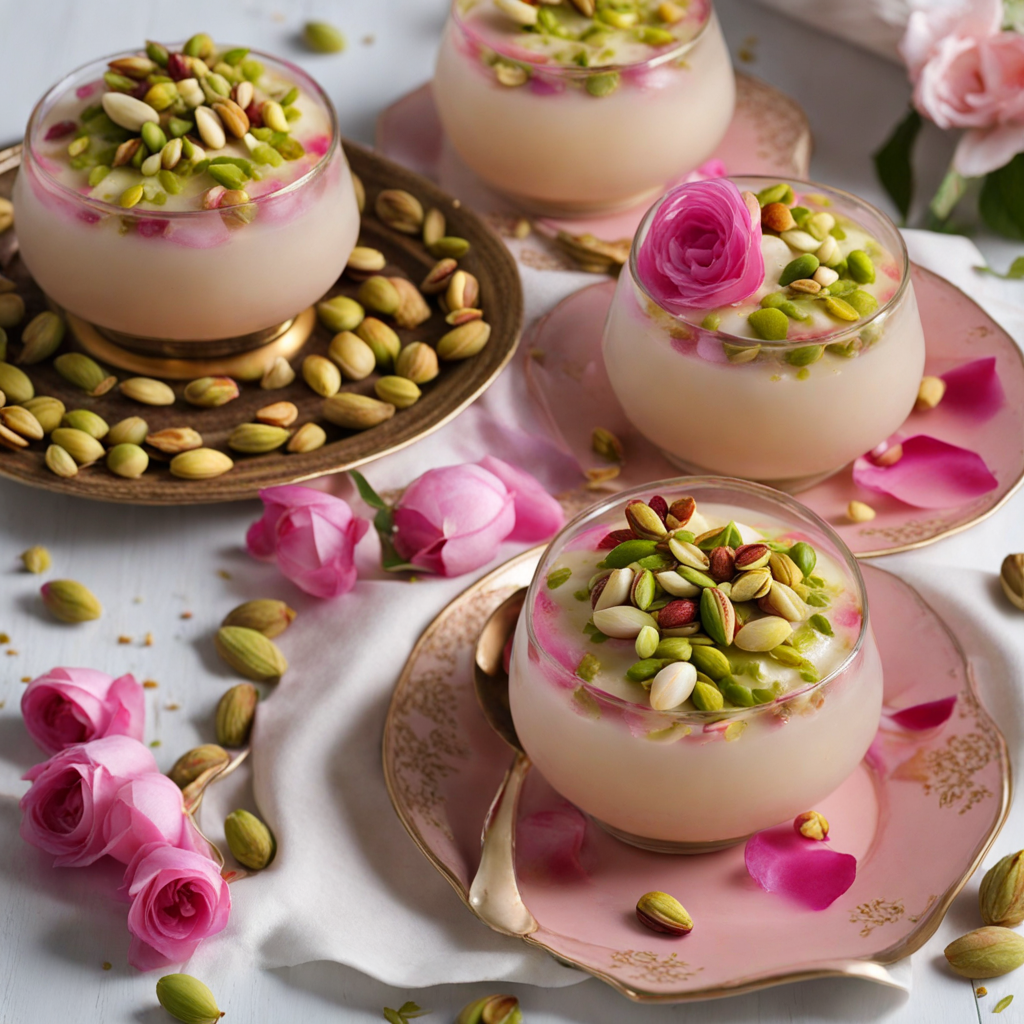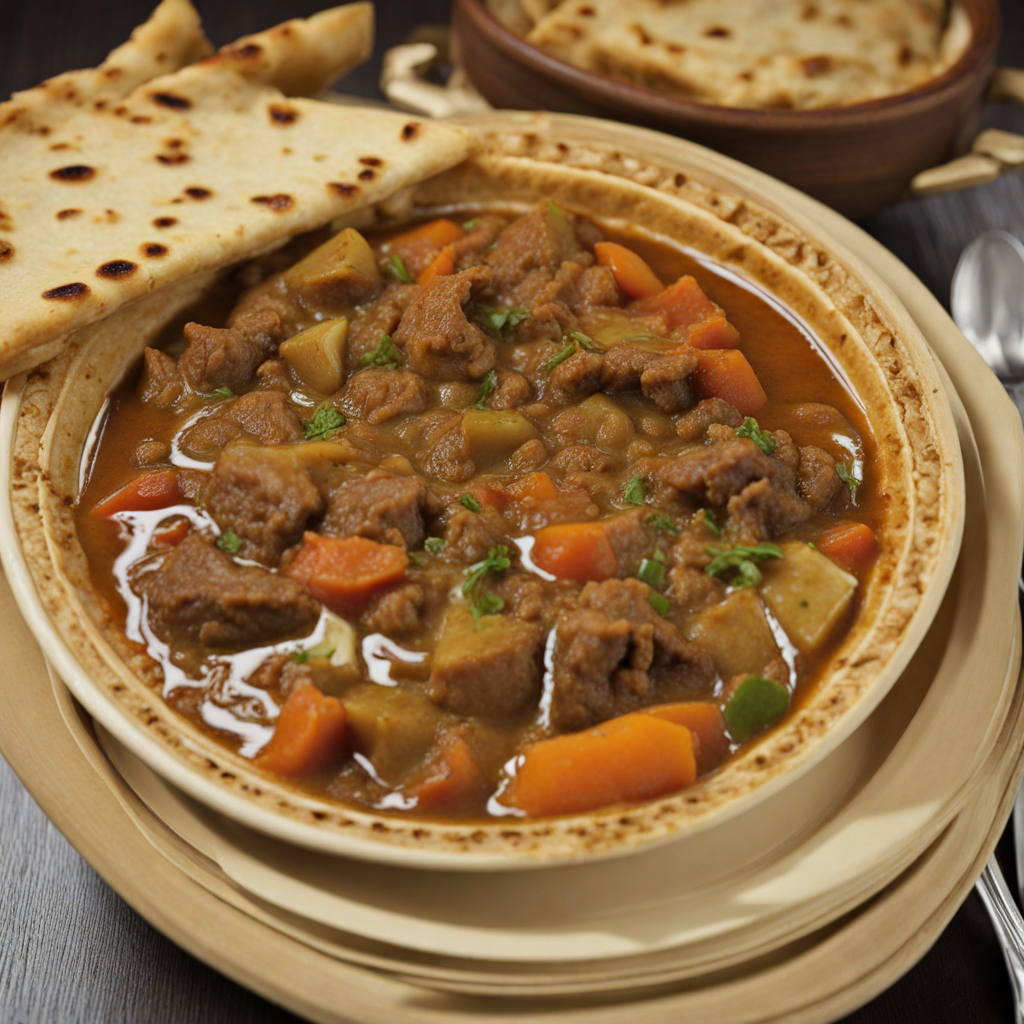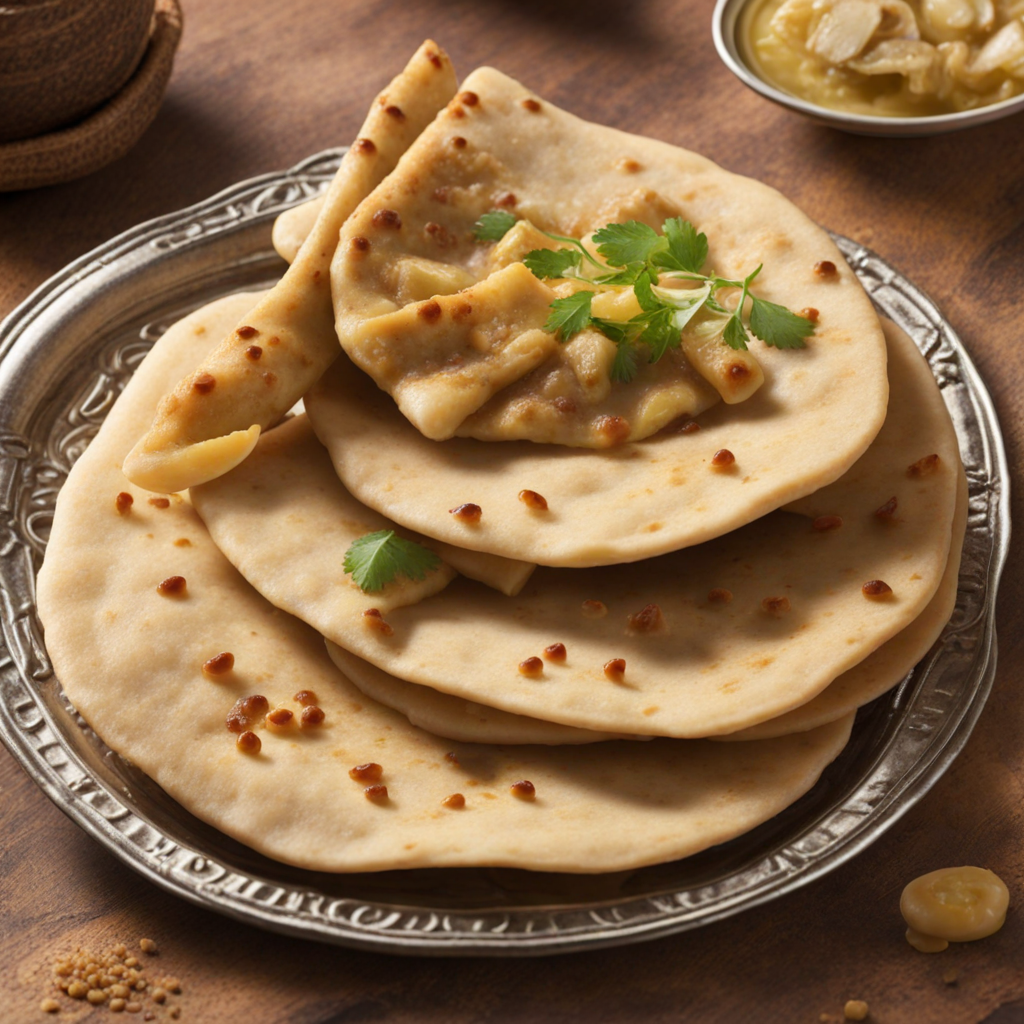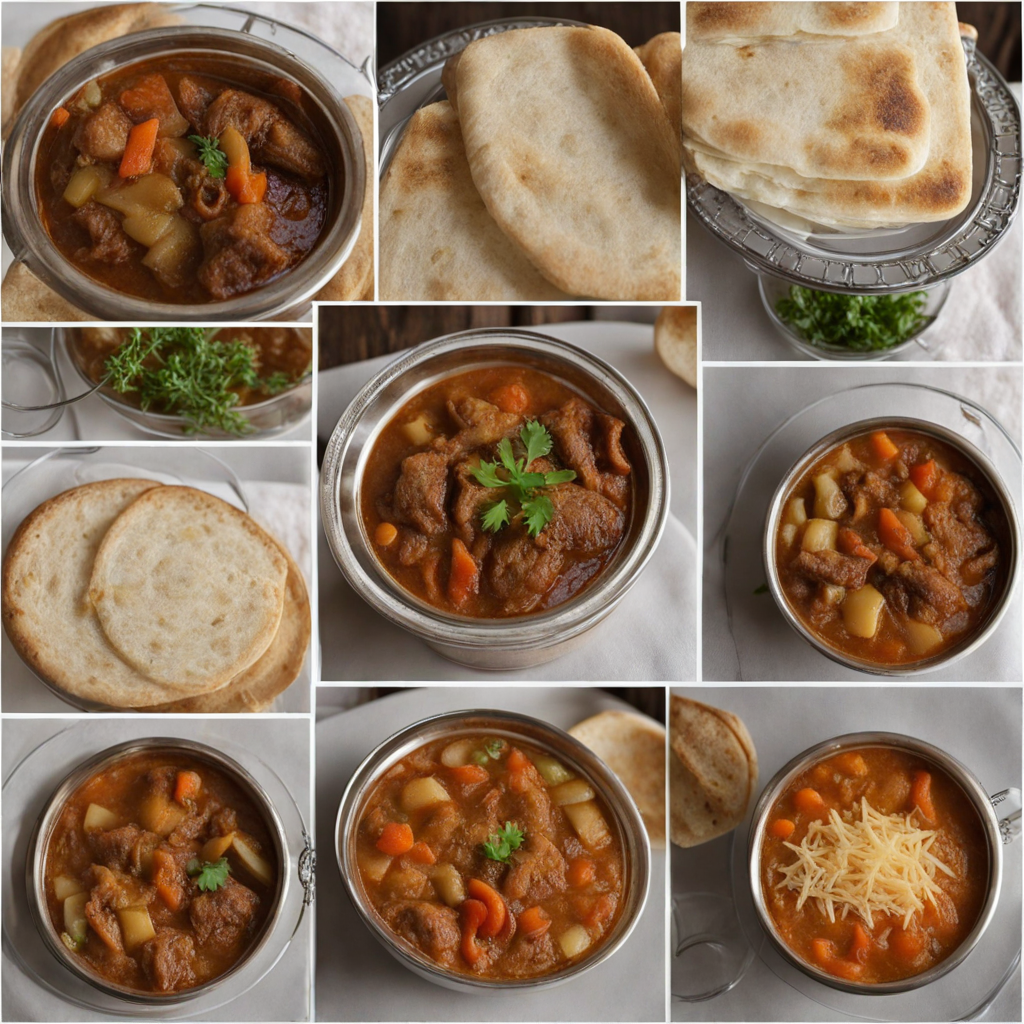Mehalbiya
Mehalbiya is a delightful and creamy dessert that hails from the rich culinary traditions of the United Arab Emirates. This enchanting dish is primarily made from milk, sugar, and rice flour, which creates a smooth and velvety consistency. The base is typically flavored with rose water or orange blossom water, infusing the dessert with a fragrant floral aroma that tantalizes the senses. Its subtle sweetness makes it an ideal treat after a savory meal, offering a perfect balance to the palate. To elevate its appeal, Mehalbiya is often garnished with a variety of toppings such as crushed pistachios, almonds, or coconut flakes. These toppings not only add a delightful crunch but also contribute to the dessert's visual appeal, creating a vibrant contrast against the creamy white base. In some variations, you may find a drizzle of honey or a sprinkle of cinnamon, enhancing the flavor profile and offering a hint of warmth. The combination of textures and flavors makes Mehalbiya a truly indulgent experience. Served chilled, Mehalbiya is a refreshing dessert that is perfect for warm climates, making it a popular choice in the UAE. It's often enjoyed during special occasions, family gatherings, or simply as a comforting treat at the end of the day. With its unique blend of ingredients and flavors, Mehalbiya invites food lovers to explore the sweet side of Emirati cuisine, providing a taste of tradition that leaves a lasting impression.
How It Became This Dish
The Sweet Legacy of محلبية: A Culinary Journey through the United Arab Emirates Origins and Early History محلبية, known as "muhallabia" or "muhallebi" in various regions, is a traditional dessert that has its roots deeply embedded in the rich tapestry of Middle Eastern cuisine. While its exact origins are somewhat murky, it is widely believed to have emerged during the Islamic Golden Age, around the 8th century, when culinary arts flourished across the region. The dessert was named after the famous Arab poet and scholar, Al-Muhallab ibn Abi Sufra, who was known for his love of fine food and often hosted lavish banquets. The earliest iterations of محلبية consisted of simple ingredients: milk, sugar, and cornstarch, flavored with rose water or orange blossom water. These basic components formed a creamy, delicate pudding that quickly became a beloved dish among the Arab populace. Over time, it spread across the Middle East and North Africa, adapting to local tastes and customs. The dish was particularly popular in the courts of caliphs and sultans, where it was often served as a refreshing palate cleanser or a luxurious dessert at feasts and celebrations. Cultural Significance In the United Arab Emirates (UAE), محلبية holds a special place in the hearts of its people. It is more than just a dessert; it is a symbol of hospitality, tradition, and cultural identity. In Emirati society, serving محلبية to guests is a gesture of welcome and generosity. The dessert is often featured at weddings, family gatherings, and religious celebrations, such as Eid al-Fitr and Eid al-Adha, where it serves as a sweet conclusion to festive meals. The preparation of محلبية is often a communal activity, bringing families together in the kitchen. Grandmothers pass down their cherished recipes to younger generations, ensuring that the art of making this delicate pudding remains alive. The act of making محلبية is imbued with love and care, as families gather to share stories and laughter while stirring the ingredients, creating a sense of unity and continuity in their culinary heritage. Evolution and Variations As the UAE embraced modernization and globalization, محلبية evolved to reflect contemporary tastes while maintaining its traditional essence. Local chefs and home cooks began experimenting with flavors and textures, incorporating ingredients that were more readily available in the modern culinary landscape. Today, it is not uncommon to find محلبية infused with saffron, pistachios, or even chocolate, showcasing the dessert's adaptability and the creativity of Emirati chefs. One popular variation is the addition of fruit, such as mango, dates, or berries, which not only enhances the flavor but also adds visual appeal. The dish can be served in individual cups or large bowls, garnished with nuts, shredded coconut, or a drizzle of honey, transforming it into a vibrant centerpiece for any gathering. This evolution reflects the UAE's dynamic culinary scene, where traditional recipes are reimagined to suit modern palates while preserving their cultural significance. Modern-Day محلبية In contemporary Emirati cuisine, محلبية continues to be a beloved dessert, featured in both home kitchens and upscale restaurants. Chefs often take pride in their unique takes on this classic dish, employing innovative techniques and presentation styles. With the rise of social media, visually stunning versions of محلبية have gained popularity, inspiring a new generation of food enthusiasts to experiment with the recipe and share their creations online. Moreover, محلبية has transcended its traditional boundaries and is now enjoyed by people of various cultural backgrounds in the UAE. The nation’s diverse population has led to a fusion of culinary influences, and محلبية often appears on menus alongside other international desserts. This blending of flavors and techniques speaks to the UAE's identity as a melting pot of cultures, where food serves as a bridge between communities. Conclusion: A Culinary Heritage The history of محلبية is a testament to the enduring power of food as a cultural artifact. From its humble beginnings in the courts of ancient Arab scholars to its status as a cherished dessert in modern Emirati households, محلبية encapsulates the rich culinary heritage of the UAE. It is a dish that not only satisfies the palate but also nourishes the soul, evoking memories of family gatherings, celebrations, and shared experiences. As the UAE continues to evolve and modernize, محلبية remains a beloved connection to the past. It serves as a reminder of the importance of tradition, hospitality, and the bonds that unite people through food. In every creamy spoonful of محلبية, one can taste not just the sweetness of the ingredients but also the richness of a culture that values connection, generosity, and the joy of sharing a meal with loved ones. Whether enjoyed in a bustling restaurant or a cozy family kitchen, محلبية will forever hold a special place in the heart of Emirati culinary tradition.
You may like
Discover local flavors from United Arab Emirates


